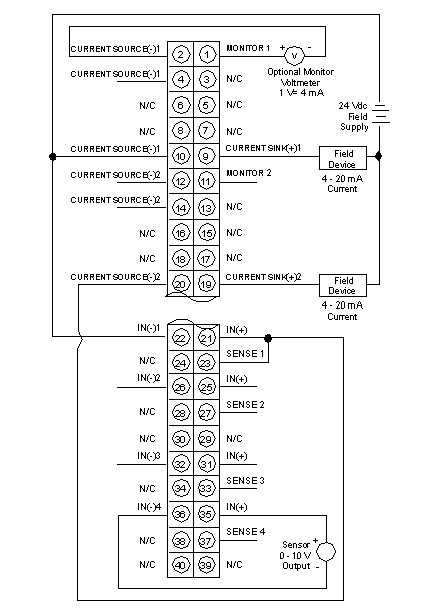|
Wiring Diagram
|
|
|
Original instructions
|
 CAUTION CAUTION |
|
UNWIRED INPUTS CAUSE INVALID READINGS
When configured for voltage inputs (no jumper installed between In(+) and sense terminals), if a broken field wire occurs, readings will be non-zero and not predictable.
Failure to follow these instructions can result in injury or equipment damage.
|

|
Typical Wiring Outputs
|
|
|
Channel 1
|
The output shows a connection to an external field device and optional monitor.
|
|
Channel 2
|
The output shows a connection to an external field device and the input of channel 1.
|
|
Typical Wiring Inputs
|
|
|
Channel 1
|
Channel 1 shows 4 - 20 mA current input controlled by output section Channel 2.
|
|
Channel 4
|
The input shows a connection to a voltage output sensor.
|
|
NOTICE
|
|
DESTRUCTION OF ADAPTER
Failure to follow these instructions can result in equipment damage.
|